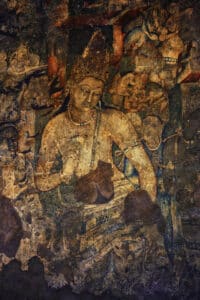TRIP details

From Delhi, the one-time capital of the British Raj, we will travel to Varanasi, one of the world’s oldest continually inhabited cities, renowned for its myriad shrines and temples lining the Ganges River as well as the Deer Park in nearby Sarnath, where the Buddha gave his first teaching in the fifth century BCE. From Varanasi, we will continue to Aurangabad, from where we will visit the cave temples of Ajanta and Ellora, which are described as the finest surviving examples of ancient Indian art and provide insight into Buddhism’s rich artistic heritage. The journey will conclude in Jodhpur, in Rajasthan, coinciding with the Holi Festival, with special access to a historical collection of paintings and manuscripts that illuminate the origins, ethos, and development of Hatha Yoga within the context of Vajrayāna, or Tantric, Buddhism.
With additional contributions by a range of local experts, this latest installment of THUS’ famous docent tours of Buddhist Asia with GeoEx will be led by Dr. Ian Baker, an acclaimed National Geographic Explorer and author of several books on the cultural, religious, and medical traditions of the Himalayas and Tibet. The trip will also include a practical introduction to a range of contemplative and yogic techniques for transforming human experience, including yogic practices devoted to attaining extreme longevity.
THE DOCENT
IAN BAKER
Dr. Ian Baker holds a PhD in History and a MPhil in Medical Anthropology from University College London, following earlier graduate work in Buddhist Studies at Columbia University and English Literature at the University of Oxford. He is the author of seven critically acclaimed books on Himalayan and Tibetan cultural history, environment, art, and medicine including, Tibetan Yoga: Principles and Practices, The Dalai Lama’s Secret Temple, The Heart of the World, The Tibetan Art of Healing, and Buddhas of the Celestial Gallery, with introductions by the H.H. the Dalai Lama and Deepak Chopra. He was lead curator for an exhibition at London’s Wellcome Collection entitled “Tibet’s Secret Temple: Body, Mind, and Meditation in Tantric Buddhism”. He is well known for his extensive field research in Tibet’s ‘hidden-lands’ (beyul), resulting in National Geographic Society designating him as an ‘Explorer for the Millennium’. He has led international groups in Tibet, Nepal, and Bhutan for Smithsonian Institution and National Geographic Expeditions and is a board member of the International Society for Bhutan Studies.
TRIP Itinerary
While we endeavor to make this itinerary as accurate as possible, it should be considered an approximate schedule of activities rather than a rigid schedule of events. We constantly look for ways to improve our trips, and advance reconnaissance may present opportunities for superior routing or activities. Trip itineraries are also subject to revision due to weather, road and trail conditions, government restrictions, and other factors beyond our control.



